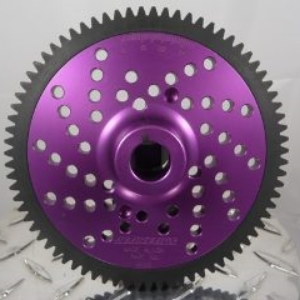So I am working on setting up this PDCIS-11T. Unfortunately, what I have here at my bench is not a complete motor, but a set of cases and a crank taper cut off at the first bearing. I have no way to measure TDC until I am in front of an engine.
Right now, we are building a kawi 650, so everything I am asking here involves a stock kawi 650s crank. My flywheel options are a stock small pin flywheel, a big pin flywheel with the taper chamfered to allow it to seat on the 650 crank, or a (750?) jetnetics total loss flywheel, which also appears to seat nicely. Like this:

I've read that people running 750's have swapped on 650 electronics, so I am assuming that the woodruf/timing of a 650 and a 750 flywheel (and inversely, the crank) are the same? If this is true, then the magnet location on the jetnetics is wildly different the lobe location on the 750 flywheels. Reading the zeel manual, it says you don't want excessive static angle, so if I understand this right, I would need to move the pickup location somewhere more suitable timing wise if I want to use the jetnetics, to bring the static angle back to 35-45 degrees or so?
I think the real question I am asking here is: Are 750 and 650 cranks timed the same? Does the woodruff key location usually represent TDC?
Edit to add:
Also... what do you all think about running the 750 flywheels with charging vs the jetnetics flywheel as total loss?

